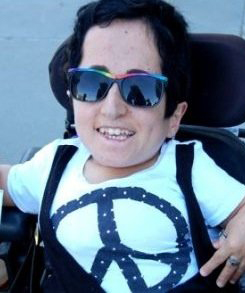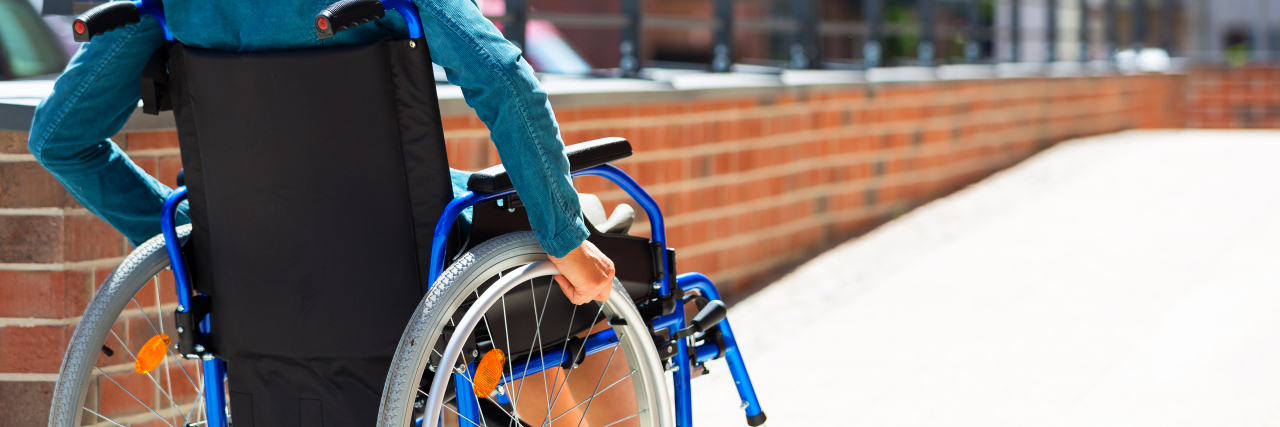Why Living With Osteogenesis Imperfecta Means Taking Social Precautions
I was invited to write about my life partner, Haley, and her condition as well as things people should be aware of in public when they are around her.
Haley is a happy, full of life and fun-loving person who was born with a condition called osteogenesis imperfecta (OI) otherwise known as brittle bone disease, type 3. Haley says, “I have a mix between type 2 and type 3, because people that have type 2 usually don’t make it shortly after birth. I have all the characteristics and symptoms of type 2, but because I survived, so far to age 33, I automatically have type 3.”
Besides having extremely brittle bones, some of the characteristics of OI type 3 include shorter limbs, heart-like shape of the face/forehead, blue sclera, as well as teeth, vision and hearing problems. Haley always notes how she has surprisingly good teeth for someone with OI. Many people with OI, including Haley, are unable to walk. For her, it is also the inability to do much without the help of an assistant or caregiver.
Along with the symptoms and characteristics of this disease, there are many health and safety risks that she has to be aware of constantly, and it would help if others were aware of as well. The danger of getting a fracture and other serious injuries is high. So is the risk of getting sick with diseases such as pneumonia, which is very serious to people living with OI. Being in public can be a risk to not only her health, but also to her life. She always has to be aware of strangers coming up to her.
People with OI can be highly susceptible to respiratory illness, such as pneumonia, due to restrictive lung disease. This happens more often with people who have type 3 because of the barrel chest; there is just not a lot of space for the lungs to expand. The severe curvature of the spine contributes to the respiratory complications as well. The use of C-Pap machines and oxygen during the day and night are common. Luckily, Haley only requires the use of oxygen at night time.
Due to the severity of health risks and safety concerns, there are a number of things people out in public can be aware of or do to help Haley out. Germs are a big concern for her. If you are sick, please stay away. If she doesn’t know you, she would prefer to not hug, touch or shake your hand.
She has had numerous instances throughout her life where strangers want to come up to her and hug or kiss her, touch her, or pray over her. Their intention is good and she is very appreciative of that, as she is an affectionate person and she knows they are just trying to brighten her day. But because she doesn’t know who they are or where they have been, what they have touched, etc, she would prefer not to risk getting sick. Another big risk of strangers coming up to her and wanting to touch her, is that they could shake her hand too hard, grab or hug her too hard and this could cause her to fracture.
Being in public can cause Haley a great deal of anxiety, for instance, when people don’t look where they are going, children and adults running around, goofing off and not paying attention. They can bump into her and she can get hurt. Even if a person is not goofing off, like if they are in a hurry and just not paying attention, such as in a grocery store wanting to go, get their groceries and get out, they never look down or around and are never aware of her being there.
Haley states, “I especially get really nervous around kids because they are moving a hundred miles a minute. They are not looking where they are going. They are hyper and they can really hurt me if they bump me. That’s all it takes is one bump, and that’s it.”
She also notes “I do love kids, especially their innocent questions and their curiosity. I encourage them to come up to me if they are curious, and ask the questions they want to ask. I don’t like when parents tell their kids not to ask questions, because then they are not learning anything.” Also, they are teaching their children that she is separate from the rest of society.
She says that she “likes kids’ minds,” it is just when they are rowdy and not paying attention that makes her nervous.
So naturally with all the risk factors stated above, anxiety does come into play with having Haley’s condition. People out in public should be mindful, slow down and look around to make sure they do not bump into nor seriously injure people like her. A serious injury or death is not worth whatever it is you are rushing for. Haley has no other choice but to always and continuously be extremely cautious, above and beyond what is required of an average person. She has to watch out for children and people not paying attention. She also has to be mindful of physical obstacles in her surroundings such as curbs, bumps, ledges and steps. Her alert system is always on.
Human contact with someone she doesn’t know is just not necessary, because of germs and health concerns involved. She says, “I am all for a hug, holding hands or kissing on the cheek with my friends and even with my coworkers. I don’t mind them hugging me. I am a very affectionate person, but I must have obvious limits in order to keep me healthy and safe.”


